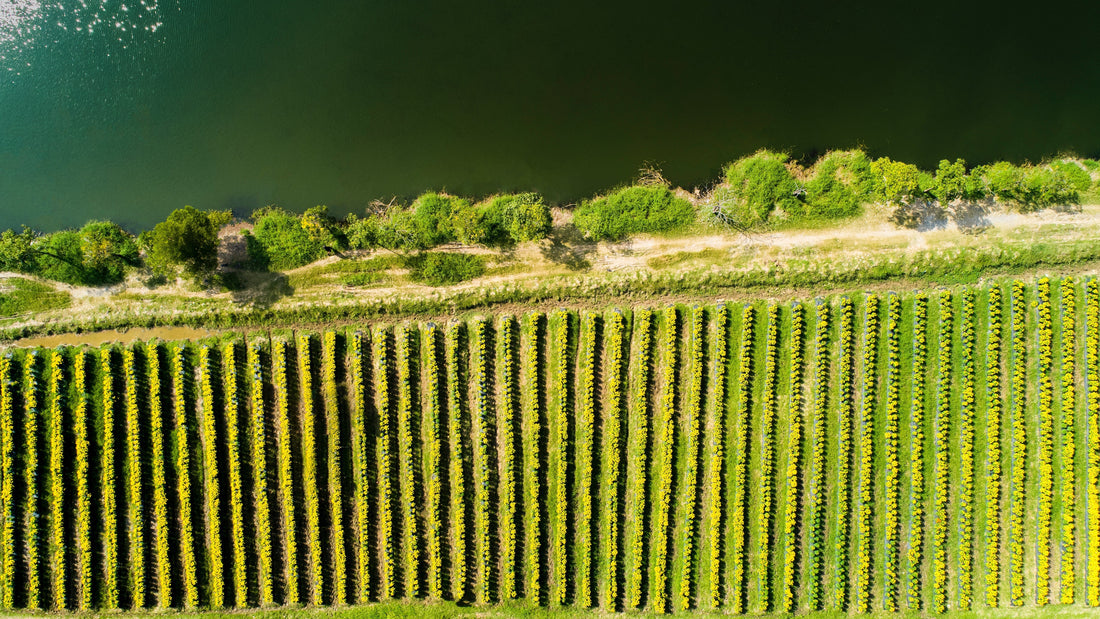Oh! With global warming, it's not rosy every day for the vine... It is subject to droughts , repeated more or less heavy rain showers . In short, to a slightly out of whack thermometer, and this has a direct impact on soil quality . To preserve and control the quality and presence of water in the ground, embankments, channels and ditches are effective allies. Let's go for a little explanation!

The different embankments and their roles in the vineyard
A berm is a sloping surface of earth or stone on land. In the wine-growing environment, there are 3 types of embankments:
- The embankments perpendicular to the slope , they mark the break in the slope.
- The embankments parallel to the slope , which are mainly located between two plots, are often created from the stones and soil of the surrounding plots.
- And finally the embankments that form ditches downstream of the plots.
The typical plants of the embankments are Teasel, Aristolochia, Great Oregano, Compagnon Blanc, and many other rather eccentric names. The embankments have several advantages for the vine. They make it possible to infiltrate runoff water and are favorable to the development of a variety of fauna. When they are high, they act as windbreaks to protect the vines, prevent landslides and soil erosion thanks to their roots which give structure to the soil.
Maintain the embankments so that they are useful for the vines
Maintenance varies depending on the slope. If the slope is slight , nature must be allowed to develop and in particular the shrubby plants which end up creating small hedges. If the inclination of the slope is pronounced , the winegrowers must refer to the construction techniques of the dry stone walls. These techniques consist in assembling without using any binder mortar, and therefore only plates, blocks, stones.
Many insects, small birds and mammals appreciate this habitat to take refuge and find food . And they are the ones that benefit the vines and agricultural plots since they contribute to developing a rich and diversified ecosystem .
Ditches and drainage channels
Ditches and drainage channels are linear holes dug in the ground to circulate and drain water . They play an essential role in collecting and filtering runoff water . Their power also lies in their revegetation. To maintain the ditches and the drainage channels it is necessary to forget the concreting, and the waterproofing of the grounds . If the ditch is already concreted, it must be extended and the vegetation allowed to grow. Finally, winegrowers and farmers concerned about the environment generally leave spaces free of cultivation and vegetated, which absorb any water overflows. For most of our Oé winegrowers, the land “rests” between two vintages: it is fallow . Around the plots, they leave enough space for hedges and isolated trees to grow freely to protect the vines from surrounding crops and bad weather . The main thing is to leave enough space so as not to shade the grapes, which need the sun to soak up the sugar (which will be useful during fermentation) and avoid developing diseases such as mildew during heavy rain, or other mushrooms.





